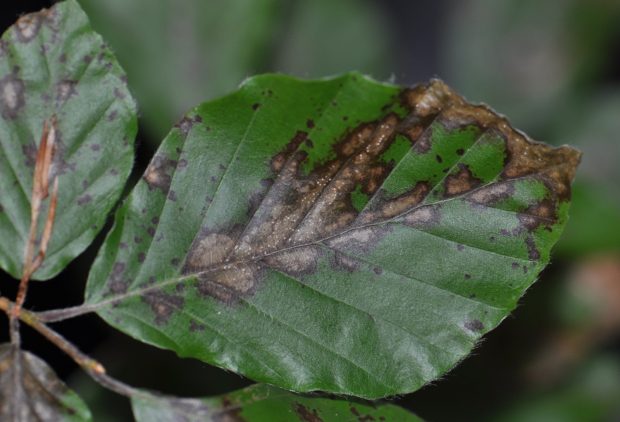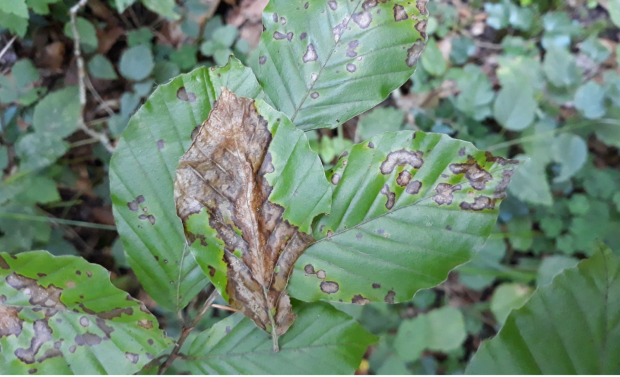
Beech, once thought to be native to the South East of England is now a common species throughout the UK, both from planting and natural regeneration. Beech trees are also present in central Europe, where the emerging pathogen fungal Petrakia liobae threatens populations. Research suggests that the disease may have been present in Europe for at least 12 years but went unnoticed. Therefore, it’s important to know what to look out for in case the disease has reached the UK.
What should I look out for?
Infected trees develop brown, irregular leaf spots with sharp, dark borders. These necrotic spots are around 1-50mm in diameter and may merge in cases of heavy infection. Mature lesions may also have fluffy white propagules (detachable spores) associated with the leaf spot. Look for symptoms in the lower canopy (1.5m – 2mm from the ground) as the P. liobae overwinters in leaf litter and re-infects nearby beech trees in the spring.
The disease is polycyclic, meaning it can have multiple infection cycles during a season, particularly if the trees are in areas of high humidity.

Where did it come from?
Recently the disease has been reclassified, splitting it from a closely related species thought to be limited to Japan. Petrakia liobae is thought to be a European species and not introduced. The fungal pathogen was first discovered in Switzerland in 2008, followed by findings in Germany, Austria, Slovakia and most recently Slovenia in 2018. The quick succession of these findings, along with their locations strengthen suggestions that the disease has probably been present in central Europe for a long time.
The impact
The disease is relatively slow-spreading and unlikely to result in the death of mature trees. However, the disease reduces tree health and visual appeal, especially in newly planted trees.
Petrakia liobae is currently not reported as present in the UK so the emphasis is on preventing the disease from being introduced. Mature beech is rarely imported into the UK, so the focus is on younger hedging specimens imported from central Europe. Due to the unsightly nature of the disease, infected stock is usually graded out during quality checks. However, there is the possibility that the disease is already present within the UK but remains undiscovered – as was the case in central Europe.
If you think you have spotted Petrakia liobae, report suspected findings through the online portal TreeAlert or contact your local APHA Plant Health Inspector.


